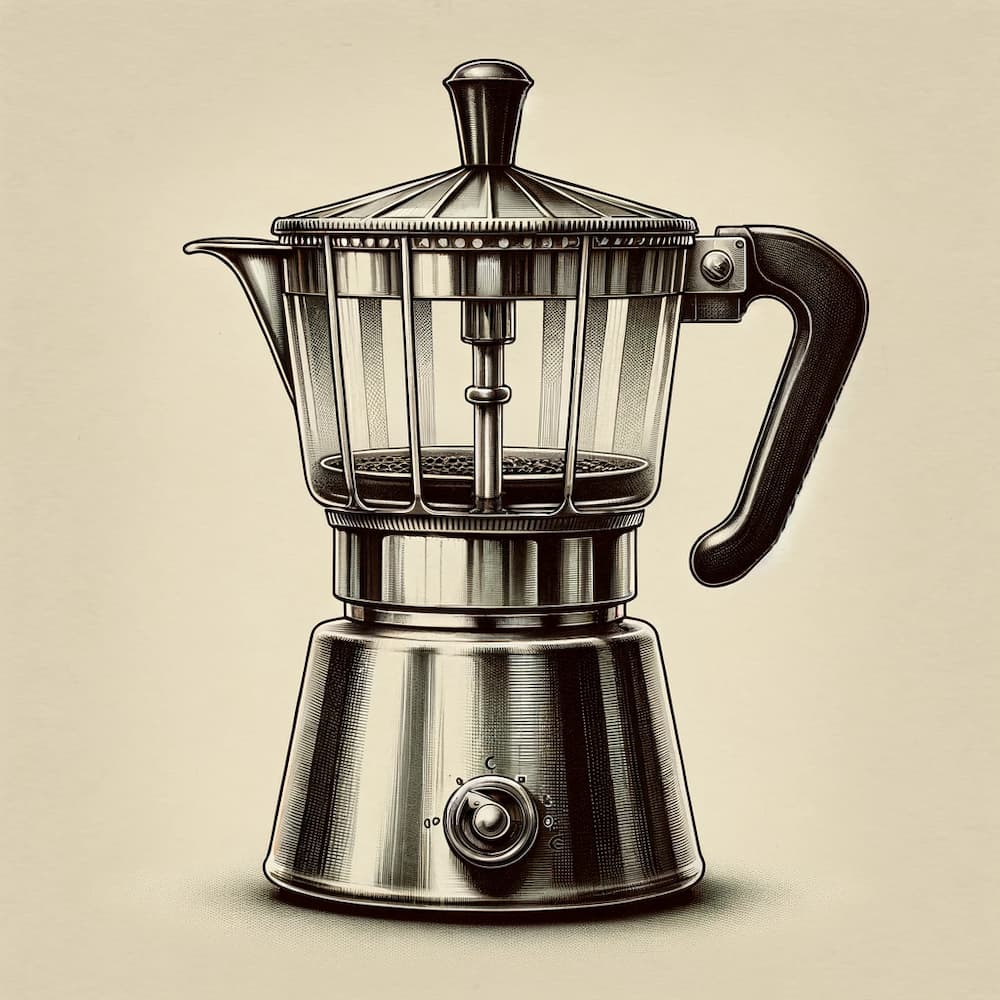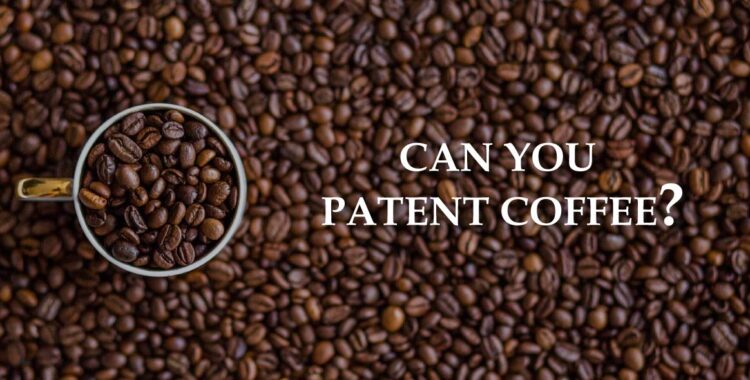Can You Patent Coffee?
The coffee industry is as diverse and competitive as it is lucrative. Innovation thrives from the aromatic beans harvested in exotic locations to the sophisticated machines brewing our morning cup. But with innovation comes the question of protection: Can you patent coffee? This article from the team at Kaufhold & Dix Patent Law delves into the intersection of intellectual property law and the coffee industry, exploring how patents can safeguard innovations and shape business strategies.
Table of Contents
- Understanding Patents in the Coffee Industry
- The Role of Patents: Protecting Innovation
- Can You Patent The Coffee Bean?
- Notable Coffee Patents
- Navigating Patent Law: Advice from Kaufhold & Dix
- The Impact of Patents on Business Strategy
- Conclusion: Can you Patent Coffee
Understanding Patents in the Coffee Industry
At its core, a patent is a legal protection granted to an inventor, giving them the exclusive right to use, make, sell, and distribute their invention for a certain period. In the context of the coffee industry, this can range from a new brewing technique to a novel coffee machine design. The essence of patenting in the coffee realm is to encourage innovation by providing creators with a temporary monopoly over their inventions.
The process of obtaining a patent is meticulous, requiring a demonstration that the invention is novel, non-obvious, and useful. For coffee-related inventions, this could mean anything from a unique method of processing beans to innovative packaging that extends the shelf life of coffee without compromising its flavor.
The Role of Patents: Protecting Innovation
Patents play a pivotal role in fostering innovation within the coffee industry. By granting inventors exclusive rights to their creations, patents provide a protective barrier against unauthorized use, reproduction, or sale of patented products or processes. This exclusivity not only rewards inventors but also encourages further research and development, driving the industry forward. For entrepreneurs and business owners, understanding and leveraging patent protection is crucial for maintaining competitive advantage and fostering a culture of continuous innovation.
Intellectual Property Playbook
An Entrepreneur's Guide To Patents, Trademarks, and Copyrights GET THE PLAYBOOK
Can You Patent The Coffee Bean?
Patenting a coffee bean itself, in its natural state, is not possible because natural organisms as found in nature are not patentable under intellectual property laws in most jurisdictions, including the United States. However, there are certain circumstances under which aspects related to coffee beans may be eligible for patent protection:
Genetically Modified or Engineered Coffee Beans
If a coffee bean has been genetically modified or engineered to exhibit new characteristics not found in nature, such as increased resistance to pests or environmental conditions, enhanced flavor profiles, or altered caffeine content, it might be eligible for a patent. These modifications must be novel, non-obvious, and have a specific, substantial, and credible utility.
Hybrid Varieties
Developers of new hybrid coffee plants, which are created through the cross-breeding of two different coffee plant species or varieties to produce a new plant with specific desired traits, may seek patent protection. The new hybrid must exhibit characteristics that are distinct, uniform, and stable over successive generations.
Processing Methods
While the coffee bean in its natural form cannot be patented, innovative methods of processing, roasting, or brewing coffee beans can be patented. These patents would cover the processes or the machinery developed for processing the beans in novel ways that improve the quality, flavor, or efficiency of coffee production.
Biotechnological Innovations
Advancements in biotechnology may lead to patentable inventions related to coffee beans, such as specific enzymes or microbes used in the fermentation process that enhance flavor development or caffeine reduction techniques that do not compromise the bean’s natural flavor profile.
Utility Patents for New Uses
In some cases, a novel use for a coffee bean or a component thereof that has not been previously discovered can be patented. This would require demonstrating a new and useful process, machine, manufacture, or composition of matter related to the coffee beans.
It’s important to note that the criteria for patentability, including novelty, non-obviousness, and utility, must be met for any of these innovations to be granted a patent. Moreover, the ethical and legal implications of patenting life forms, including genetically modified organisms (GMOs), are subjects of ongoing debate and vary by jurisdiction.
Notable Coffee Patents
In the vibrant world of coffee innovation, where the quest for the perfect brew meets cutting-edge technology, patents play a crucial role in protecting and recognizing groundbreaking inventions. From the pioneering design of the first coffee maker to the modern convenience of single-serve systems and the simple yet ingenious coffee cup sleeve, these patents illustrate the dynamic interplay between innovation, utility, and consumer demand.
The First Coffee Maker Patent
The journey of coffee-making innovation is marked by numerous milestones, but none so pivotal as the grant of the first coffee maker patent. This seminal event in the annals of coffee history underscores the beginning of a transformative era, where the ritual of brewing coffee shifted from a manual, time-consuming process to one embraced by technology and convenience.
The Genesis of Coffee Maker Innovation
The first coffee maker patent was awarded in the late 19th century when coffee’s popularity was burgeoning across Europe and America. Before this invention, coffee was typically made using rudimentary methods that often led to inconsistent flavors and temperatures.
The first coffee maker patent, in the context of modern coffee brewing technology, is often attributed to the invention of the percolator, a significant development in the evolution of coffee machines. This patent was awarded to the American inventor James Mason in December 1865. Mason’s design introduced an innovative method of brewing coffee by cycling boiling water through coffee grounds using gravity until the desired strength was achieved. This invention marked a departure from earlier coffee-making methods and laid the foundation for many of the brewing innovations that followed. The percolator became a staple in households and significantly influenced the coffee brewing process, representing a key milestone in the history of coffee maker patents.

The Invention of the Percolator
The Impact on Coffee Consumption
This pioneering invention was critical in democratizing the coffee experience, making it accessible and consistent for the masses. By simplifying the brewing process, it laid the groundwork for future innovations in coffee makers, each building upon the last to improve efficiency, taste, and convenience. The patent not only showcased the potential for mechanical solutions in enhancing the coffee-drinking experience but also set a precedent for the importance of intellectual property in protecting and encouraging innovation within the coffee industry.
Legacy and Evolution
The legacy of the first coffee maker patent is evident in the vast array of brewing technologies available today. From drip coffee makers to sophisticated espresso machines and single-serve pod systems, the fundamental principles outlined in that initial patent continue to influence design and functionality. This historical milestone reflects the continuous pursuit of perfection in coffee brewing, driving inventors and manufacturers to innovate and improve upon the past.
As we consider the modern conveniences that define our current coffee experiences, it’s essential to acknowledge the origins of these advancements. The first coffee maker patent not only represents a significant leap forward in coffee technology but also embodies the spirit of innovation that continues to shape the coffee industry. It is a testament to the enduring human quest for improvement and the pivotal role of intellectual property in safeguarding and fostering these endeavors.
Keurig Coffee Maker Patent
The Keurig coffee maker patent represents a significant milestone in the evolution of coffee brewing technology, marking the advent of convenience and innovation in the coffee industry.
Breakthrough in Coffee Brewing
The Keurig coffee maker, developed by Keurig, Inc., introduced a revolutionary single-serve brewing system. The system’s foundation lies in its patented K-Cup pods, which contain a pre-measured amount of coffee grounds, tea, or hot chocolate mix. The patent covered not only the design of these pods but also the mechanism of the coffee maker itself, which pierces the pod, injects hot water, and brews a single cup of coffee in a matter of seconds.
The Keurig Coffee Patent’s Role in Shaping the Industry
Granted in the early 1990s, the Keurig coffee maker patent allowed for a significant shift in consumer behavior. Before Keurig, preparing coffee was often viewed as a time-consuming process, requiring the brewing of a full pot, with much going to waste. The Keurig system offered unparalleled convenience, perfectly aligning with the fast-paced lifestyle of the modern consumer. This convenience, combined with the variety of coffee flavors and beverages the system made available, catapulted Keurig to the forefront of the coffee industry.
Implications for Competition and Innovation
The exclusive rights provided by the patent enabled Keurig to dominate the single-serve coffee market for years. Competitors were compelled to develop alternative systems or seek partnerships to offer compatible products, driving innovation within the industry. The patent’s existence encouraged others to explore new ways to innovate in coffee brewing, leading to a diverse market of single-serve coffee solutions.
The End of the Patent and Its Aftermath
The Keurig coffee maker patent eventually expired, opening the door for competitors to create compatible pods and machines without infringing on Keurig’s intellectual property rights. This shift led to a significant increase in competition, driving prices down and offering consumers a broader range of options. Despite this, Keurig’s pioneering role in the coffee industry remains undisputed, with the brand continuing to be a major player in the market.
The Keurig coffee maker patent is more than just a legal document; it’s a testament to how a single innovation can alter the landscape of an industry, influence consumer habits, and drive continuous evolution. The success of Keurig’s patented system underscores the power of intellectual property in fostering innovation, securing market position, and ultimately shaping the way we live our lives—one cup of coffee at a time.
Coffee Cup Sleeve Patent
The Coffee Cup Sleeve Patent marks a significant, yet often overlooked, innovation in the coffee industry, focusing on consumer comfort and sustainability. This patent addresses a simple but universal problem—how to comfortably hold a hot beverage without burning your fingers. The invention of the coffee cup sleeve, a practical solution to this issue, has become an indispensable part of our coffee-drinking experience.
Innovation Born from Necessity
The patent for the first coffee cup sleeve was awarded to Jay Sorensen in 1993 for his invention known as the “Java Jacket.” The inspiration came from a personal experience of spilling hot coffee on his lap due to the lack of an adequate heat barrier between his hand and the cup. This incident led Sorensen to develop a simple, yet ingenious, corrugated insulating sleeve that slips over a disposable coffee cup, providing both heat insulation and grip.

Insulating Coffee Cup Sleeve
Impact on the Coffee Industry
The coffee cup sleeve patent not only solved a common practical problem but also had a profound impact on the coffee industry. It enhanced the customer experience by enabling coffee drinkers to comfortably enjoy their hot beverages on the go. Furthermore, the adoption of coffee sleeves by coffee shops and chains around the world demonstrated the industry’s commitment to customer comfort and satisfaction.
Sustainability and Branding Opportunities
Beyond its primary function of heat insulation, the coffee cup sleeve has evolved into a tool for sustainability and branding. Made from recycled materials, it offers an eco-friendly alternative to double-cupping. Coffee shops and brands have also seized the opportunity to customize sleeves with logos, promotions, and artwork, turning them into mobile advertisements and a canvas for creative expression.
Legacy and Continuing Innovation
The legacy of the coffee cup sleeve patent is evident in its ubiquitous presence in daily life. Its invention catalyzed further innovation in disposable drinkware, leading to the development of sleeves with additional features such as improved grip, space-saving designs, and even integrated loyalty cards or augmented reality experiences.
The story of the coffee cup sleeve patent exemplifies how addressing a straightforward need through innovation can lead to widespread industry adoption, enhance consumer experiences, and open new avenues for sustainability and marketing. As such, it stands as a testament to the transformative power of seemingly simple inventions and the role of patents in protecting and encouraging innovation.
Navigating Patent Law: Advice from Kaufhold & Dix
With over 20 years of experience and more than 1,900 patents obtained for clients, Kaufhold & Dix offers invaluable insights for navigating patent law in the coffee industry. The key to successful patenting lies in understanding the unique aspects of your invention and the market. Early consultation with a specialized patent attorney can clarify the patentability of innovations and outline a strategy for protection and enforcement. Kaufhold & Dix emphasizes the importance of a tailored approach, recognizing that each inventor’s needs and objectives are unique. Moreover, their commitment to transparent, flat-fee services ensures that inventors can secure their intellectual property rights without unforeseen costs.
The Impact of Patents on Business Strategy
In the competitive arena of the coffee industry, patents are not just legal tools but strategic assets. They can influence the direction of a company’s research and development, inform partnership opportunities, and even dictate market positioning. The strategic use of patents can:
- Secure Market Position: By protecting innovative products or processes, companies can establish and maintain a dominant position in the market. The exclusivity granted by patents can deter competitors and attract customers looking for unique offerings.
- Facilitate Partnerships and Licensing: Patents can be leveraged as bargaining chips in negotiations, leading to licensing agreements or partnerships. These arrangements can provide additional revenue streams and expand the reach of patented technologies.
- Encourage Innovation: The promise of exclusive rights can stimulate continuous innovation within companies. This drive for innovation can lead to the development of new products, processes, or even entirely new markets.
Entrepreneurs, inventors, and business owners in the coffee industry must consider patents as part of their broader business strategy, assessing how intellectual property can support their goals and facilitate growth.
Conclusion: Can You Patent Coffee?
The question, “Can you patent coffee?” opens the door to a complex and fascinating exploration of intellectual property law within the coffee industry. From the first coffee maker patent to the latest in brewing technology and accessories, patents have played a crucial role in fostering innovation and shaping the industry.
For inventors and entrepreneurs, the journey of bringing a new coffee-related invention to market is intertwined with the strategic use of patents. Navigating the patent process with a knowledgeable partner is essential for protecting and leveraging intellectual property effectively.
In an industry as vibrant and competitive as coffee, patents not only protect inventions but also drive the continual evolution of the market. They serve as a testament to human ingenuity and the endless pursuit of the perfect cup of coffee.
For further information on navigating intellectual property law and securing patents for your innovations, consider consulting with experts like Kaufhold & Dix, whose dedication to patent, trademark, and copyright law ensures skilled, reliable, and proficient counsel.
References
- Justia Patents (https://patents.justia.com/patents-by-us-classification/426/432)
- Suiter Swantz IP (https://suiter.com/national-coffee-day-and-the-role-intellectual-property-has-in-the-coffee-industry/)
- ABG Intellectual Property (https://abg-ip.com/coffee-patents/)
- PubMed (https://pubmed.ncbi.nlm.nih.gov/36704855/)






